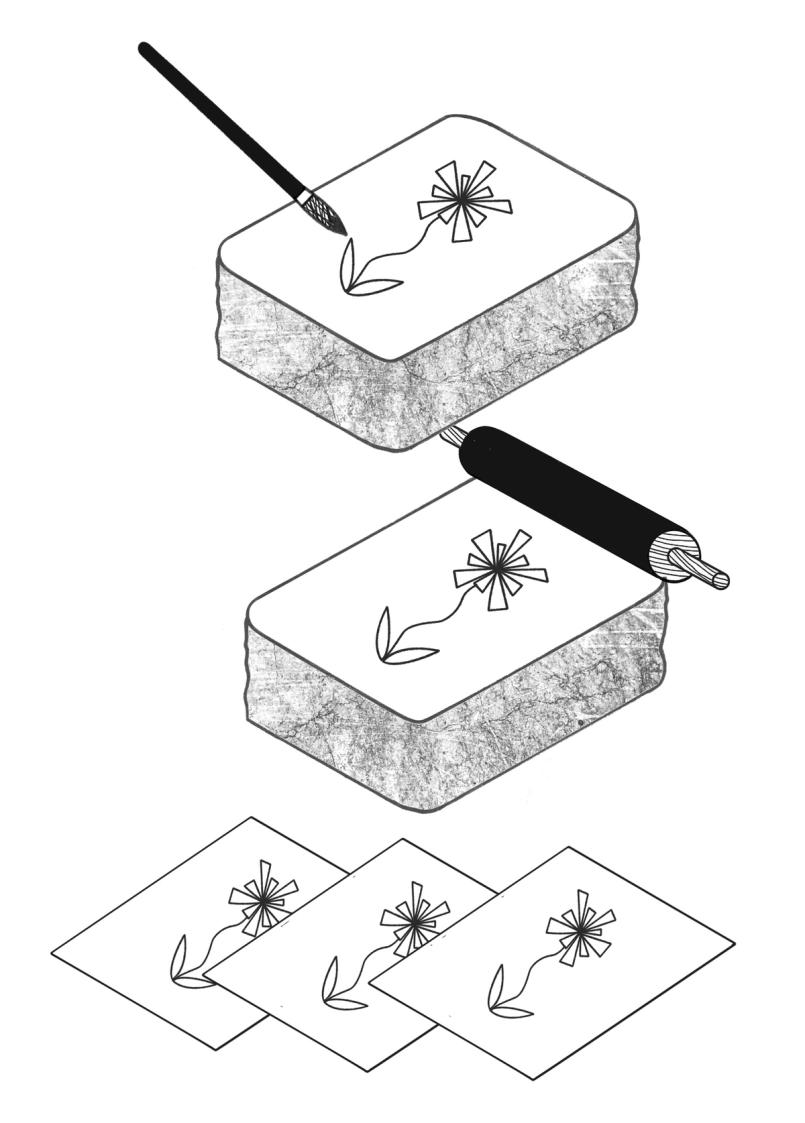Lithography

Illustration: Chloe Kendall .
Lithography is a printing technique that enables the rapid production of elaborate prints using stone plates (lithos means ‘stone’ in Greek).
HISTORY
Lithography was invented in 1796 by Alois Senefelder (1771–1834), an actor in Bavaria. He developed lithography as a method of reproducing sheets of music.
After lithography proved successful at this, ever more complex and elaborate images were printed lithographically. Since lithography reproduced images drawn directly onto the stone, it allowed for closer results to original drawings than other techniques of that time. Lithography allowed for multiple layers and colors and was often used for advertising posters, sheet music covers, etc. Before offset lithography became the predominant printing method during the second half of the twentieth century, some books combined multiple techniques (lithography and/or engravings for images, letterpress printing for texts).
TECHNIQUE
The process of lithography printing uses the hydrophobic/hydrophilic chemical reaction between water and oil. Combined with the effect of acid or corrosive products, which creates an area for water to go in, the more greasy ink can be kept on the surface and transferred to the paper to be printed.
TODAY
Nowadays, traditional lithography is mostly used to print artistic works and other specific prints, as the process is much more costly than modern techniques, even if it renders a high-quality result. On the other hand, offset lithography is still the standard method by which most items are printed today.